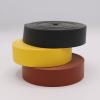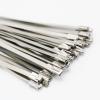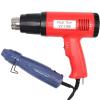Heat shrink tubing is implemented in the house, workplace, automobile and factory setting to help protect your wires and cables from abrasions, cuts, liquids and environmental factors like UV rays to ensure their lifetime. But, like your wires and cables, this means heat shrink tubing is also susceptible to abrasions, cuts, liquids and various environmental factors.
Heat shrink tubing is designed to protect your wires and cables but this means it can become prey to the various things it was designed to withstand, everything has a shelf life.
So when you start to notice that your heat shrink tubing isn’t performing at its very best, it may be time to replace it. Read on to find out how to notice it’s time for replacement, what you need and how to replace your heat shrink tubing.
Why would you need to remove heat shrink?
There are many reasons why you would need to remove heat shrink from its previous application. Heat shrink tubing takes the brunt of force when it comes to protecting your wiring, so it’s no surprise when the abrasions and cuts you were preventing on your wires, show up on your heat shrink tubing.
Another reason you may want to replace your heat shrink tubing is to implement cable organization with the use of new heat shrink tubing that is color coded or has custom printing on the shell.
Although not often, with enough movement, heat shrink tubing can become loose, endangering the safety of your wires by making them susceptible to elements like liquids, chemicals or other environmental factors.
How to safely remove heat shrink tubing
Once heat shrink tubing is properly installed, it is intended to be replaced with a new one when it retains a lot of damage upon itself. This process is simple and will ensure your wires stay protected.
Protective gear
It is good practice to wear protective gear while handling wiring and cable equipment. Rubber shoes, gloves, protective eyewear and a mask are just a few examples of personal protective equipment to help protect you from flying particles, shocks or electrocution.
Heat shrink tubing replacement gear
To successfully replace your heat shrink tubing, you must first ensure you have the correct gear. This includes:
- A pair of scissors or a blade to cut the tubing.
- Pliers or a gripping tool to pry apart the old tubing.
- A measuring tape or ruler to measure the length of the wire on which the tubing will get attached.
- A heat gun to attach fresh heat shrink tubing.
Removing the old tubing
First, locate the ends of the old heat shrink tubing, then pry it back using pliers. After this step is completed, cut the old tubing lengthwise using scissors or a blade. Being mindful not to accidentally cut or damage the wiring underneath.
Installing the new tubing
Measure out the length of the wire on which the new tubing has to be installed. Then, calculate the heat shrink tubing’s length needed to cover the required area. Check the internal and external diameter of the tubing as well. Cut through the new tubing and then shrink using the heat gun, spreading the heat evenly over the wire so that it bonds.
Important things to note while installing or replacing heat shrink tubing
Different internal and external diameter of tubing
Internal and external diameters, which are given in its specifications by manufacturers need to be referred to during the installation process. This is because the diameters change upon shrinkage of tubing and can fit incorrectly on the wire.
Different heating temperatures
There are many different types of heat shrink tubing and all of them have their own temperature to which they shrink to their original size. It is important to refer to these specifications before heating the tubing.
Cutting technique
When the tubing is to be cut, it to be cut cross-sectional to retain its strength and integrity. If it is cut along its length then the heat shrink will be essentially wasted.
*Not an alternative to tubing: Electrical tape
Some people believe that heat shrink tubing can be replaced by electrical tape. Although this may work for a very short period of time, the adhesive on the electrical tape will wear off easily.
Alternative to heat gun: Hair dryer
Although heat can be provided to the tubing using a hair dryer, it still will not be as hot as required. A heat gun is your best tool as it can go up to very high temperatures ensuring a tight seal for your heat shrink tubing.
Recycling
Once heated, heat shrink tubing can shrink only one time and cannot be used again for protection of wires and cables. Additionally, whenever a heat shrink tubing is removed, the damage done during removal can permanently impact its performance.
Want to know more?
Hopefully, this guide has helped you understand all you need to know to remove and replace heat shrink for your application. Set up an account or log in to put in an order.
If you have additional questions, visit our learning center or FAQs. Or you can contact us here with questions or to receive a sample.








